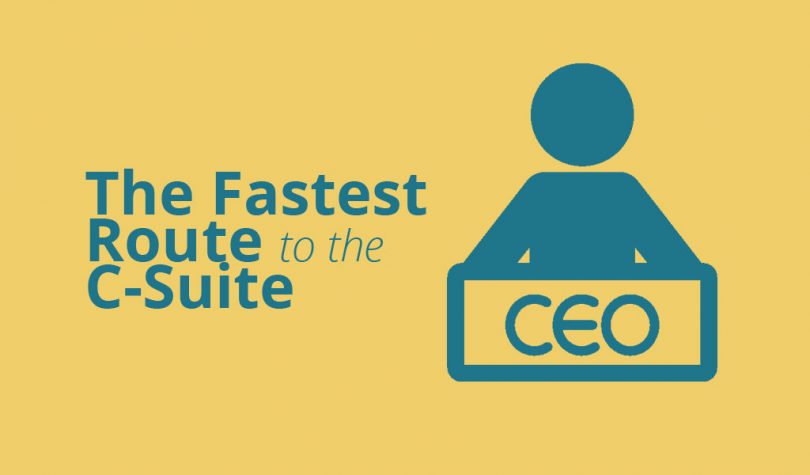A comfortable six-figure salary, a deluxe corner office, and a prestigious “chief” in your job title — if these are the daydreams that cloud your mind throughout your workday, you aren’t alone.
Being a member of the C-suite is a noble business goal, but to get there, you need a solid plan for your career.

Half a century ago, executives reached their positions by working 40 years for the same company, being reliable and diligent. These days, the road to the C-suite is not as neatly paved. As an ambitious worker of today, you must be impeccably strategic in your career maneuverings to gain any hope of an executive’s office before it’s time for you to retire — at the very least, you must:
Know What You Need to Become an Executive
If you want to be an engineer, you get an engineering degree. If you want to be a singer, you sing every day. What do you do if you want to work in the C-suite?
The answer depends on the type of executive you want to be — but generally, your journey should start with education. Though chief technology officers have a different knowledge and experience set than chief marketing officers, both are business leaders, and thus, to be either, you must learn how to be a leader. A good place to start is with MBA online programs, which will teach you every aspect of business and help you gain important leadership qualities, like communication and motivation. Usually, a resume boasting an MBA will earn you an express ticket into middle management, and from there, it is much easier to carve a path into the C-suite by making connections and gaining prestige.
In addition to education, you should have ample experience in a specific industry — which is where the next tip comes in.
Job Hop for Efficiency and Experience
A few decades ago, job hoppers were the least attractive of all candidates. Common career advice claimed that if you left a job before putting in five full years, you would be hard-pressed to find employment elsewhere. These days, if you are staying at one position for longer than three years, you are likely wasting your time.
Studies show that employees who stick around in their same-old positions earn at least 10 percent less than their job-hopping peers. Worse, job-stayers are earning fewer promotions than ever, despite the fact that internal hires typically demand less money and have a greater knowledge of internal processes. It might seem unfair, but the truth is you need to move around often to earn better pay and positions.
Job hopping has additional benefits to those looking to reach the c-suite. For one, you gain exposure to different workplace environments, helping you to find the corporate culture you enjoy. For another, you gain more occupational experience when you job hop because each position you attain will have slightly different responsibilities and tools. Both advantages will help you prepare for your future executive duties.
Yet, to job hop effectively, you need to master the final trick — which will also help you reach the C-suite in record time.
Have Good Timing in Your Career Climbing

The primary reason job hopping has become so necessary in recent years is the unwillingness for older executives to leave their jobs — even after they pass typical retirement age. People are living longer, which means they are remaining healthy and headstrong longer, leaving little room for younger generations of ambitious workers to move up. Only once in a blue moon does a C-suite position open up — and you need to be primed and ready to take it.
Timing is probably the most frustrating aspect of moving forward in your career. It can feel random, the disbursement of raises and promotions, and many workers struggle their entire lives to understand exactly when to make career moves. However, through research and networking, you can learn when higher-ups are likely to leave, giving you an opportunity to advance. For example, if your executive boss is young and just attained her position two months ago, you probably have a long wait ahead of you if you stay with this employer; however, if your executive boss is above 65 and starting to “feel his age,” you might have a good shot at breaking into the C-suite soon.
You can be a young executive — but unless you start your own business, you might not be as young as you’d like. Still, if you put in good work and good time, the C-suite will come to you.


